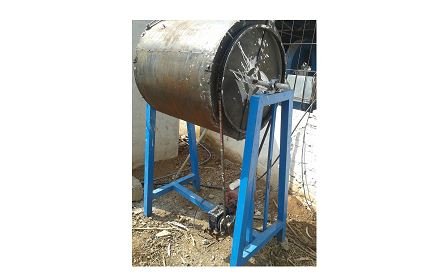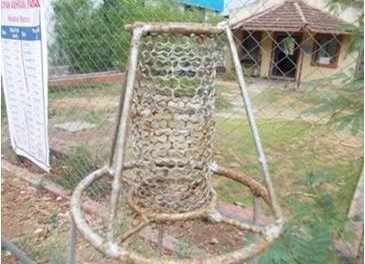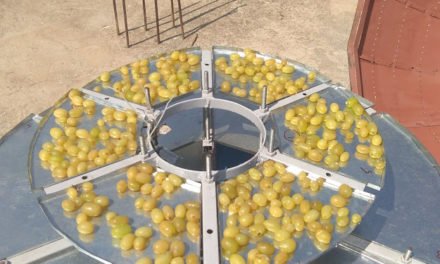Solar Drum Roaster upgradation…
Posted by AMOL KHAMKAR on 17 JUN 2018EDIT
Nature of Assignment –
- This assignment is a upgradation of solar drum roaster which is not operating currently.
- It is a project for DBRT student, in which my role is to work as guide and make the solar drum operative by working along with the DBRT student.
- Student assigned to work on this project from DBRT is Chinna Ponna ( Workshop Section).
—————————————————————————————————————————————–
Problem Identification –
- The spider in love jaw coupling between motor shaft and gearbox shaft is damaged completely.
- The foundation for motor and gearbox is not appropriate.
- Belt tension is not adjustable.
- Initial efforts required to start the drum rotating.
- The roaster assembly is difficult to move, difficult to move by single person.
- Pulley attached to the drum is not exactly V shaped B type pulley since we are using B Type V Shape belt.
Works Done –
All the works done in this assignment are the collective efforts of both of us, since it is important to deliver the science or engineering behind the problem statements mentioned above to this student.
- First upon I given a task to search the problems in the drum roaster assembly to this student.
- After getting his observations I asked him to search the type of coupling used .
- The details of the coupling.
- Now we understood that the spider from the coupling assembly was damaged. So we buy the coupling spider.
- After installing spider into the coupling we saw that the motor shaft was not locked to the coupling. So for locking it we did following operations-
- Drilling to the Coupling
- Tapping to the coupling for inserting M4 size bolt
After doing above work we have run the roaster idle for almost half hour. But during this half hour the threads we made are damaged completely due to the excessive vibrations. Since the motor and gearbox were not aligned properly on single monoblock foundation.
- Now to solve this we made complete drill on Coupling throughout the motor shaft and placed a metal wire pin and locked the coupling jaw to the motor shaft as shown in Fig. 1

Fig. 1 Locked Coupling and Motor Shaft
- After this work we have made the moblock type foundation and install motor and gearbox on it.

- The belt tension adjusting was not possible with the current design of the drum roaster, so we made a design by which it is now simple to move the whole gearbox and motor assembly to adjust the belt tension i.e. pulley to pulley distance. The upgraded fabricated design is shown in following fig.

The four Screws shown in above fig. are use to tightening or loosing the foundation from sliding guide frame which having the linear grooves.

Trial –
We have taken trial on peanuts
Date – 25/05/2018
- Starting time – 11:41 am
- End Time – 01:25 pm
Total Time- 1 Hr 44 Min.
- Average Temperature at drum outer surface 75 degree Celsius to 80 degree Celsius.
Weights –
- Initial weight – 3.050 kg
- Weight after roasting – 2.850 kg
Total loss on Roasting of peanuts – 200 gm
After taking trial we understood the difficulty of operating / moving the roaster out of the focus of Scheflar and found a solution which includes the attachment of caster wheels to the four legs of the roaster assembly as shown in following fig.

As like this the roaster is upgraded now according to the DBRT project completion schedule. Since there are another issues of roaster also. To continue the upgradation another one month intern Sahil is assigned to work on roaster now.
- The problem of “starting efforts” also solve now, so that no need of manual efforts to start the motor rotating.
- Now along with Sahil the work of changing the shape of pulley attached to the drum is going on
- Also we are going to check the maximum capacity of the roaster by weight.
Date – 19.06.2018
Trial to check maximum operating capacity of roaster has done with Sahil.
- Two bags filled with sand of 5 kg each.
- Five bags filled with sand of 1 kg each.
Initially we put total 5 kg sand into the drum then next 5 kg we added then roaster was running well.
Now we added 2 kg sand then we found the belt was slipping.
So, we increase the tension of belt by sliding the motor and gearbox assembly.
Now we again added 1 kg while then also roaster run well. Then when we added next 1 kg it was found that the belt starts slip. So we removed half kg from the drum then we found the drum rotating well.
From this we concluded the capacity of the roaster at now is 13.5 kg.




